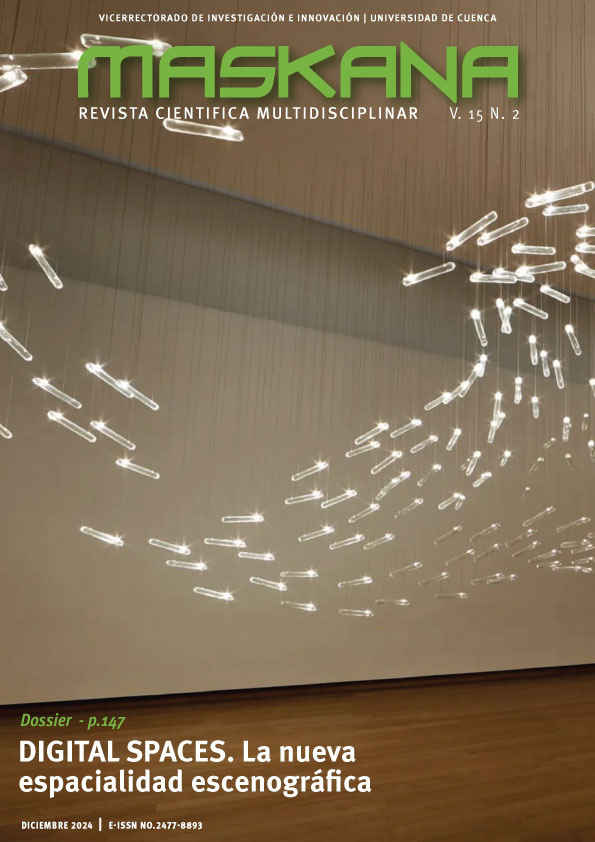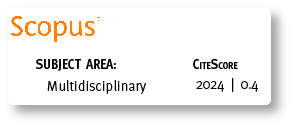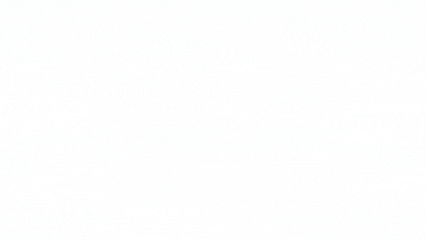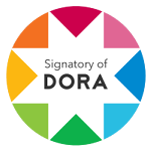Challenges in contemporary drawing and its definition in the expanded field
DOI:
https://doi.org/10.18537/mskn.15.02.14Keywords:
drawing, graphic art, design, contemporary, new technologyAbstract
Methodological issues, such as the lack of consensus in defining ‘drawing,’ have become more complex in contemporary times; a context characterized by the dissolution of categories, artistic expansion, and perpetual technological evolution. The objective of this article is to propose an alternative perspective for investigating this augmented and emerging notion of drawing, employing an analytical-comparative methodology with a distinctly interdisciplinary approach in order to generate new lines of research for addressing an ever-evolving artistic field. The research advocates for a broad understanding of graphic art through case studies from the 20th and 21st centuries. It is ultimately suggested that drawing should be apprehended as part of a creative, transformative, interdisciplinary transmedia dynamic rather than in any specific material characteristic.
Downloads
Metrics
References
Arnheim, R. (2019). Arte y percepción visual: psicología del ojo creador (3.a ed., 10.a reimp.). Alianza Editorial.
Ashwin, C. (2016). What is a drawing? Drawing: Research, Theory, Practice, 1(2), 197–209. https://doi.org/10.1386/drtp.1.2.197_1
Belting, H. (2007). Antropología de la imagen. Katz.
Bolter, J. D., Engberg, M., y MacIntyre, B. (2021). Reality Media: Augmented and Virtual Reality (en línea). MIT Press.
Brea, J. L. (2010). Las tres eras de la imagen: imagen-materia, film, e-image. Akal.
Castro Flórez, F. (2002). Robert Smithson: El dibujo en el campo expandido. En J. J. Gómez-Molina (Ed.), Estrategias del dibujo en el arte contemporáneo (2.ª ed., pp. 553–592). Cátedra.
Clark, A. y Chalmers, D. (1998). The extended mind. Analysis, 58(1), 7-19.
Eames, A. (2008). Embedded Drawing. En S. Garner (Ed.), Writing on drawing: essays on drawing practice and research (pp. 125–139). Intellect Books.
Goldsmith, K. (2019). Escritura no-creativa: gestionando el lenguaje en la era digital. Caja Negra.
Gómez-Molina, J. J. (2007). Dibujo y profesión. En J. J. Gómez-Molina (Ed.), La representación de la representación: Danza, teatro, cine, música (pp. 13–88). Cátedra.
Gómez-Molina, J. J. (2003). El concepto de dibujo. En J. J. Gómez Molina (Ed.), Las lecciones del dibujo (3.a ed., pp. 17-183). Cátedra.
Han, B.-Chul. (2014). En el enjambre. Herder Editorial.
Hayles, N. K. (2005). My mother was a computer: digital subjects and literary texts. University of Chicago Press.
Herrera-González, I. (2024). Aproximación a la virtualidad en el videojuego: perspectivas sobre realidad, potencialidad e interacción. En J. Sierra-Sánchez y S. Liberal-Ormaechea (Eds.), Entre pantallas y realidades: una travesía por el universo audiovisual (pp. 451–468). Mc Graw Hill.
Ingold, T. (2010). Transformations of the line: Traces, threads and surfaces. Textile: The Journal of Cloth and Culture, 8(1), 10–35. https://doi.org/10.2752/175183510X12580391270100
Joselit, D. (2013). After art. Princeton University Press.
Keogh, B. (2018). A play of bodies: how we perceive videogames (ePub). The MIT Press.
Krauss, R. (1979). Sculpture in the Expanded Field. October, 8, 30–44.
Langer, S. K. (1953). Feeling and form: a theory of art. Scribner’s.
Lévy, P. (1998). Becoming virtual: Reality in the Digital Age. Plenum Trade.
Lister, M., Dovey, J., Giddings, S., Grant, I., y Kelly, K. (2009). New Media: a critical Introduction (2.a). Routledge.
Luzar, R. (2017). Rethinking the graphic trace in performative drawing. Theatre and Performance Design, 3(1–2), 50–67. https://doi.org/10.1080/23322551.2017.1327559
Martínez Moro, J. (2004). La ilustración como categoría: una teoría unificada sobre arte y conocimiento. Trea.
Mesa Lima, L. (2024). La materialidad en el dibujo: el problema de la representación. En El trazo abierto: mujeres creadoras y dibujo expandido (pp. 121–140). Visor Libros.
Patterson, T. L. (1994). Frank Lloyd Wright and the Meaning of Materials. John Wiley & Sons Inc.
Perloff, M. (1987). The Futurist Moment: Avant-Garde, Avant Guerre, and the Language of Rupture. University of Chicago Press.
Petherbridge, D. (2008). Nailing the liminal: The difficulties of defining drawing. En S. Garner (Ed.), Writing on drawing: Essays on drawing practice and research (pp. 27–42). Intellect Books.
Rawson, P. (1969). Drawing (The appreciation of the Arts/3). Oxford University Press.
Richardson, F. [s. f.]. Página web de Frances Richardson. https://www.francesrichardson.co.uk/works-on-paper
Ryan, M. L. (2001). Narrative as Virtual Reality: Immersion and Interactivity in Literature and Electronic Media. The Johns Hopkins University Press.
Simon, J. F. [s. f.]. Página web de John F. Simon. http://www.numeral.com/artworks/artAppliances/1998_2000/colorpanel.php
Vadillo Rodríguez, M. (2024). Mujer y estructura del simulacro. El uso del dibujo como herramienta escéptica: Regina Silveira, Barbara Kruger y Kara Walker. En R. Román Alcalá e I. Herrera-González (Eds.), Arte y escepticismo: Duda, crítica y catarsis en el arte contemporáneo (pp. 143–184). Almuzara Universidad.
Varela, F. J., Thompson, E., y Rosch, E. (1997). De cuerpo presente: Las ciencias cognitivas y la experiencia humana (2.a ed.). Gedisa. [Originalmente publicado en 1991]
Published
How to Cite
Issue
Section
License
Copyright (c) 2024 Isabel Herrera González

This work is licensed under a Creative Commons Attribution-NonCommercial-ShareAlike 4.0 International License.
Copyright © Autors. Creative Commons Attribution 4.0 License. for any article submitted from 6 June 2017 onwards. For manuscripts submitted before, the CC BY 3.0 License was used.
![]()
You are free to:
 |
Share — copy and redistribute the material in any medium or format |
 |
Adapt — remix, transform, and build upon the material for any purpose, even commercially. |
Under the following conditions:
 |
Attribution — You must give appropriate credit, provide a link to the licence, and indicate if changes were made. You may do so in any reasonable manner, but not in any way that suggests the licenser endorses you or your use. |
| No additional restrictions — You may not apply legal terms or technological measures that legally restrict others from doing anything the licence permits. |









